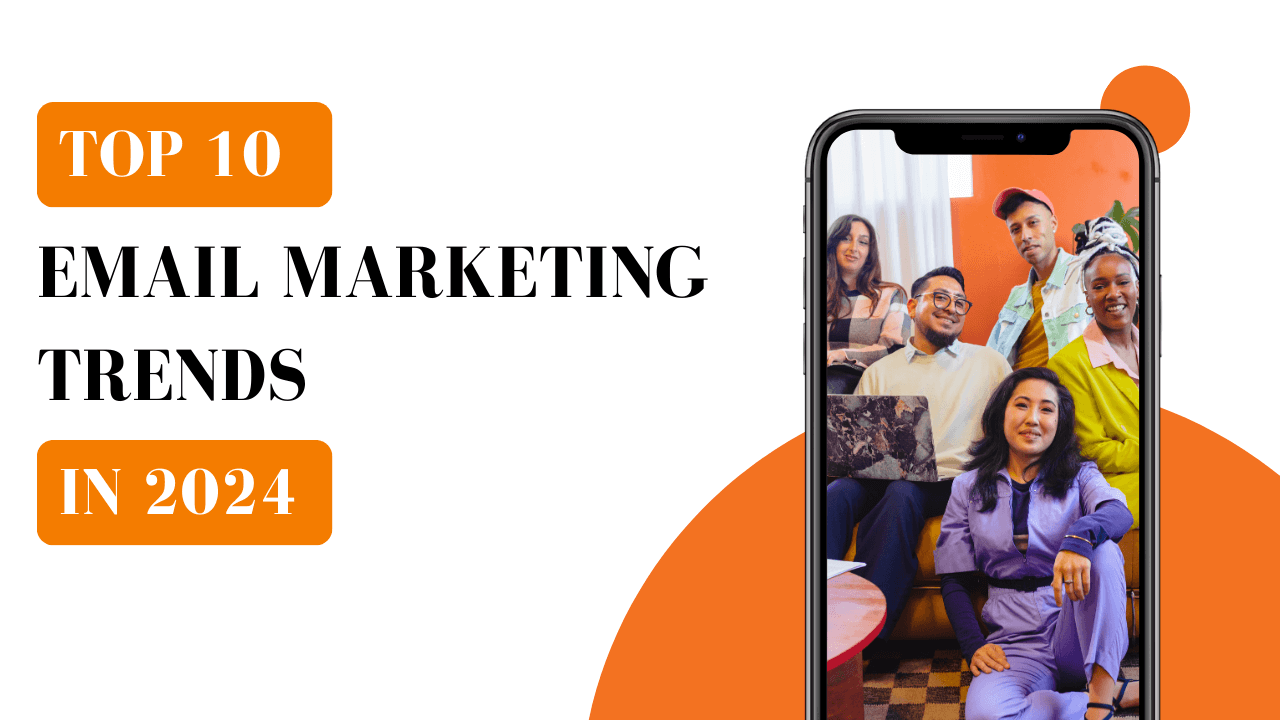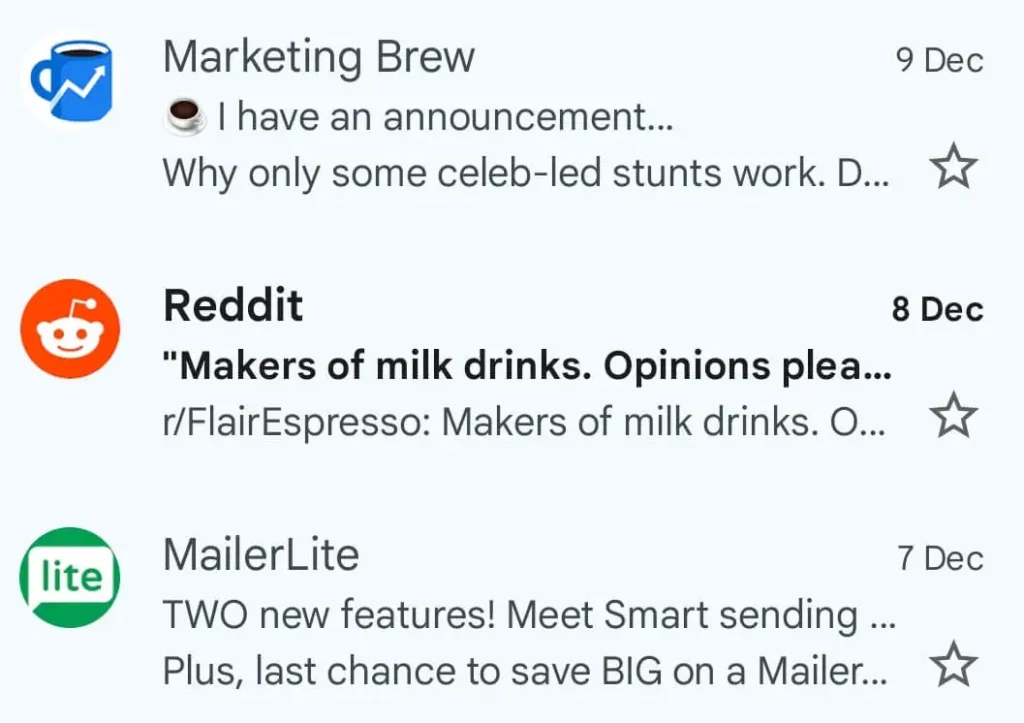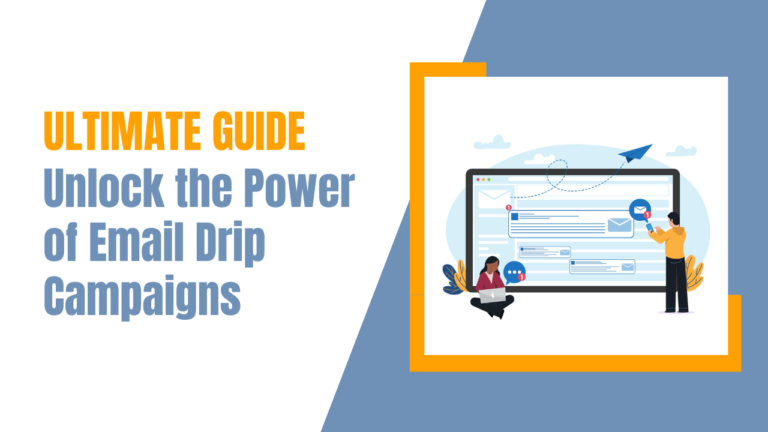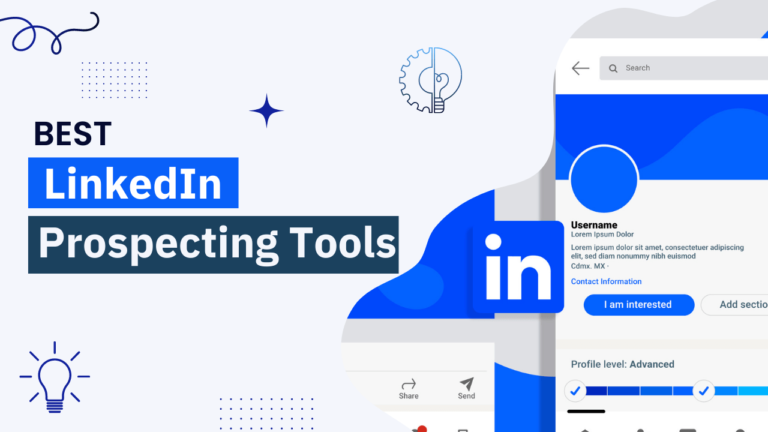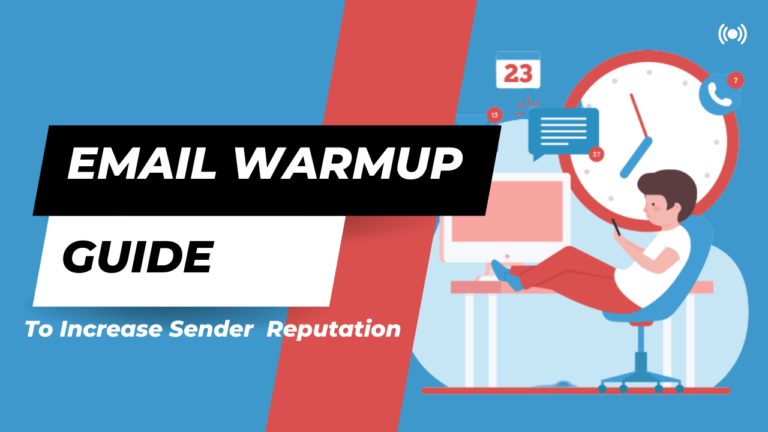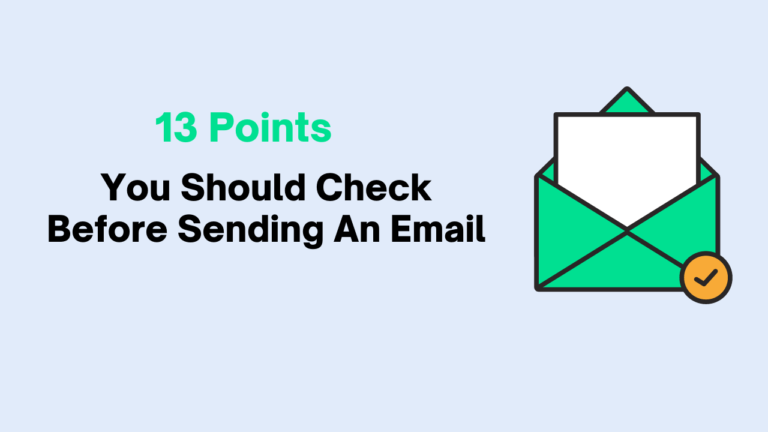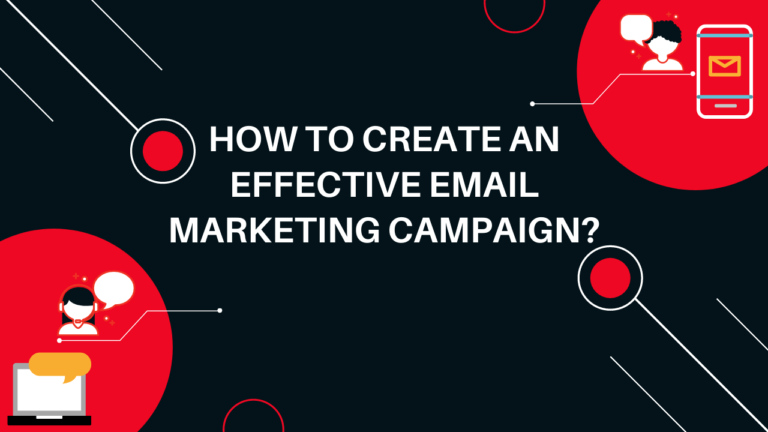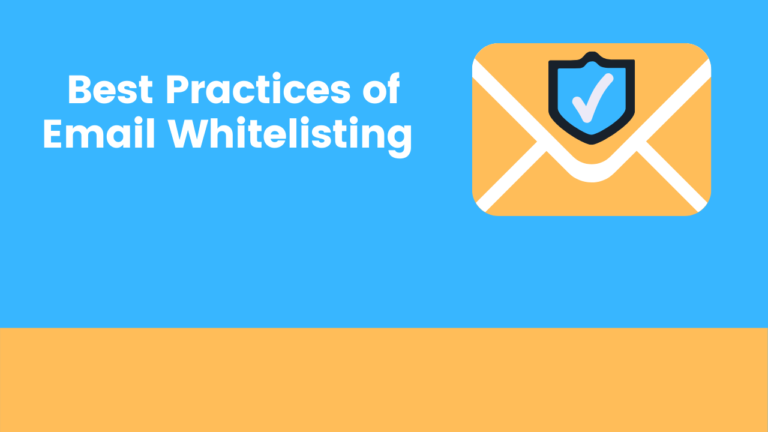Every day new technology enters the email marketing field. Email marketing is evolving into an advanced tool that enhances marketer efficiency and effectiveness. Email marketing software has adopted new technologies such as dynamic content, AI content generators, AI subject line generators, AI-driven send-time optimization, personalization, AMP emails, CTA creators, and more. These are not just email marketing trends; people are already using and witnessing outstanding results.
However, AI is not the only trend you will see in 2024. There are other trends to consider, including inbox regulations, email authentication, Gmail and Yahoo sender requirements, and more. We have listed 10 email marketing trends that you should adopt in your email marketing campaign to achieve your goals.
“In 2020, the worldwide email marketing market held a valuation of $7.5 billion, with a projected surge to $17.9 billion by the year 2027”
Source: Statista
Explore the realms of innovation and engagement as we reveal the ’10 Best Email Marketing Trends for 2024.’ Discover the strategies that will shape the future of digital communication and elevate your email campaigns to new heights.
1. Artificial Intelligence
AI plays an important part in an email marketing strategy. It helps you reduce workload and optimize your email marketing efforts. Not every email marketing platform has AI features, but you can consider platforms like GetResponse, AWeber, MailerLite, and Mailmodo.
With the help of AI (Artificial Intelligence):
- You can generate multiple subject lines.
- Send personalized emails to each prospect.
- You can generate email content based on keywords or topics.
- You can create complete brand assets like logos, images, emails, landing pages, forms, etc.
- AI helps build mailing lists and clean up email lists.
These are the useful AI features you will get to save time and improve your email marketing results.
2. Hyper-personalisation
Every email campaign you send has the goal of generating more revenue. Nowadays, sending simple emails does not work. Customers want to see highly personalized emails that attract them to open and click. Hyper-personalization in email marketing involves tailoring content, recommendations, and experiences to individual recipients based on their specific preferences, behaviors, and characteristics. Here are some types of hyper-personalization that can be implemented in email marketing:
-
Dynamic Content
Customize the content of your emails based on user data, such as location, past purchases, or browsing history. This ensures that each recipient receives content relevant to their interests.
-
Behavioral Targeting
Analyze user behavior, such as clicks, opens, and purchases, to tailor future emails. For example, you can send follow-up emails with related products based on previous purchases.
-
Product Recommendations
Use machine learning algorithms to analyze user behavior and suggest products or services that are likely to be of interest to the individual recipient.
-
Location-Based Personalization
Tailor content based on the recipient’s geographical location. This can include local offers, events, or store information.
-
Personalized Offers and Discounts
Provide unique discounts or offers based on the recipient’s previous interactions, purchase history, or preferences.
-
Cart Abandonment Emails
Send targeted emails to users who have abandoned their shopping carts, reminding them of the items left behind and potentially offering a discount to encourage completion of the purchase.
-
Preference Centers
Allow subscribers to customize their preferences and interests. Use this information to send personalized content that aligns with their chosen preferences.
-
Surveys and Feedback
Gather feedback through surveys and use the responses to tailor future communications. This shows customers that you value their opinions and are committed to meeting their needs. Implementing these hyper-personalization strategies can significantly enhance the effectiveness of your email marketing campaigns by delivering more relevant and engaging content to your audience.
3. Send Time Optimization
AI-based send-time optimization in email marketing is a sophisticated approach that leverages artificial intelligence algorithms to determine the optimal times to send emails to individual recipients. Instead of relying on fixed schedules, this technology analyzes the historical behavior, preferences, and engagement patterns of each subscriber to identify the most opportune moments for communication. Here’s an explanation of how AI-based send-time optimization works and its benefits:
How AI-based Send-Time Optimization Works?
1. Data Collection
The system collects data on each subscriber, including their past open and click-through rates, time zone, and historical engagement patterns.
2. Machine Learning Algorithms
Machine learning algorithms analyze this data to identify patterns and trends associated with the recipient’s interaction with emails.
3. Predictive Analytics
Based on the insights gained, the AI model predicts the most favorable times for each individual subscriber to receive and engage with emails.
4. Real-Time Adaptation
The system continuously adapts and refines its predictions as it gathers more data and as subscriber behaviors change over time.
Benefits of AI-based Send-Time Optimization
-
Increased Engagement
By sending emails at times when subscribers are most likely to open and click, AI-based send-time optimization increases overall engagement rates. This can result in higher conversion rates and better campaign performance.
-
Time Zone Consideration
Considering the time zone of each subscriber, AI helps avoid sending emails at inconvenient hours, ensuring that messages arrive when recipients are most likely to be active.
-
Improved Customer Experience
Tailoring the delivery schedule based on individual preferences enhances the overall customer experience. Subscribers are more likely to appreciate and engage with emails that align with their daily routines.
-
Optimized Conversion Rates
By reaching subscribers when they are most receptive, AI-based send-time optimization contributes to higher conversion rates, ultimately leading to increased revenue for businesses.
-
Efficient Resource Utilization
Marketers can optimize their resources by focusing efforts on the times that are most effective for their audience. This ensures that emails are not only well-crafted but also delivered when they have the greatest impact.
AI-based send-time optimization in email marketing is a valuable tool for marketers seeking to maximize the impact of their campaigns. By leveraging advanced algorithms to understand and adapt to individual subscriber behaviors, businesses can improve engagement, boost conversion rates, and ultimately achieve better results from their email marketing efforts.
4. Email Marketing Automation
A trend in email marketing automation is the increasing emphasis on personalized and highly targeted communication. Modern email marketing automation trends focus on leveraging advanced technologies, data analytics, and artificial intelligence to create more tailored and engaging experiences for subscribers. Key aspects of this trend include:
-
Behavioral Automation
Implementing automated workflows triggered by specific user actions, such as clicks, opens, or purchases. This allows for timely and targeted follow-up emails based on individual engagement patterns.
-
AI and Machine Learning Integration
Incorporating artificial intelligence and machine learning algorithms to analyze user data, predict behavior, and optimize email campaigns. This includes AI-driven subject line optimization, content generation, and send-time optimization.
-
Omnichannel Integration
Connecting email marketing automation with other marketing channels to create a seamless and consistent customer experience. This involves integrating email campaigns with social media, mobile messaging, and other communication channels.
-
Automated Customer Journeys
Designing automated workflows that map out the entire customer journey, from initial awareness to conversion and beyond. This ensures a cohesive and personalized experience at every touchpoint.
In essence, the current trend in email marketing automation is centered around delivering more personalized, targeted, and interactive experiences for subscribers, driven by the integration of advanced technologies and a deeper understanding of user behavior.
5. Dynamic Content
The email marketing trend in dynamic content involves the strategic use of personalized and adaptive elements within email campaigns. Dynamic content allows marketers to tailor specific parts of an email based on individual recipient characteristics, such as preferences, behavior, or demographics.
By dynamically adjusting images, text, offers, or calls-to-action, marketers can create highly relevant and engaging email experiences. That resulted in increased user interaction and conversion rates. This trend reflects a move toward more individualized and responsive content delivery, providing subscribers with a more personalized and meaningful email interaction.
6. Email Authentication
The email marketing trend of Email Authentication, particularly the implementation of Brand Indicators for Message Identification (BIMI), is focused on enhancing email security and brand recognition. Email Authentication involves using protocols like SPF (Sender Policy Framework), DKIM (DomainKeys Identified Mail), and DMARC (Domain-based Message Authentication, Reporting, and Conformance) to verify the legitimacy of the sender. BIMI takes this a step further by displaying a brand’s official logo or indicator next to authenticated emails in the recipient’s inbox. This trend serves multiple purposes:
-
Enhanced Brand Trust
BIMI provides a visual cue, displaying a brand’s logo alongside authenticated emails. This builds trust with recipients and helps them easily recognize legitimate communications from the brand.
-
Improved Email Deliverability
Proper email authentication helps in reducing the likelihood of emails being marked as spam or phishing attempts. This, in turn, enhances overall deliverability rates.
-
Mitigation of Email Spoofing
Email Authentication protocols, including BIMI, play a crucial role in preventing email spoofing, where malicious actors forge the sender’s identity. This adds an extra level of security to email communications.
-
Consistent Branding
BIMI allows marketers to maintain consistent brand representation by ensuring that the brand’s logo is prominently displayed in email inboxes. This helps to easily recognize your brand identity.
-
Enhanced User Experience
The visual aspect of BIMI contributes to a more engaging and visually appealing email experience for recipients. It also helps users distinguish legitimate emails from potential phishing attempts.
-
Industry Standardization
BIMI is gaining traction as an industry standard, supported by major email providers. As more brands adopt BIMI, it is likely to become a widespread practice, contributing to a more secure and standardized email environment.
The email marketing trend of Email Authentication, particularly with the incorporation of BIMI, is a proactive approach to bolstering email security, establishing brand trust, and creating a more visually engaging and consistent brand experience within recipients’ inboxes.
7. Interactive Emails
The trend of interactive emails is reshaping traditional email marketing by introducing dynamic and engaging features that encourage user participation within the email itself. Instead of static content, interactive emails invite recipients to interact, click, and engage directly within the email interface. This trend includes elements such as clickable carousels, image galleries, surveys, quizzes, and even add-to-cart options.
8. Changes to Email Sending Requirements from Gmail and Yahoo
As we step into early 2024, there are notable developments on the horizon that will impact the way we send emails. Both Gmail and Yahoo, holding a significant share of email addresses globally, are set to implement changes in their requirements for mass senders with the aim of enhancing the overall inbox experience for users.
Commencing from February 2024, both tech giants will necessitate all email senders to adhere to the following guidelines:
-
Authenticate Sending Domain
Ensure the authentication of your sending domain to validate the legitimacy of your emails.
-
One-Click Unsubscribes
Provide recipients with the convenience of one-click unsubscribes, promoting transparency and user-friendly interactions.
-
Stay Below Spam-Rate Threshold
Maintain a spam-rate below the specified threshold to ensure that your emails are well-received and avoid potential filtering.
-
DMARC Record for Bulk Email Senders
For bulk email senders dispatching 5,000 or more emails in a single day, an additional authentication protocol, a DMARC record, will be required.
It’s crucial to note that these changes will impact all email senders, and adaptation is essential for continued effective communication.
9. Accessibility
In the evolving landscape of email marketing, a notable trend is the increasing awareness and emphasis on accessibility. Email marketers are recognizing the importance of creating content that is inclusive and accessible to individuals with diverse needs. This trend involves optimizing emails to ensure that all recipients, including those with disabilities, can access and engage with the content seamlessly.
As accessibility awareness continues to improve, email marketers are incorporating practices such as using descriptive alt text for images, designing emails with clear and legible fonts, ensuring proper color contrast, and implementing accessible coding practices. By prioritizing accessibility, marketers not only comply with legal requirements but also cater to a broader audience, enhancing the overall user experience for individuals with varying abilities.
This trend reflects a growing commitment within the email marketing community to create content that is welcoming, user-friendly, and accessible to everyone, aligning with the principles of inclusivity and diversity in digital communication.
10. Email Testing
New trends in email testing are shaping the way marketers optimize and enhance their email campaigns for better engagement and deliverability. Some key trends include:
-
Interactive Testing Platforms
The rise of interactive testing platforms allows marketers to preview and test their emails in a more dynamic environment, simulating real user interactions and experiences.
-
AI-Powered Testing
Integration of artificial intelligence in email testing enables more advanced analysis of elements like subject lines, content, and design. AI can provide insights into what resonates best with specific audience segments.
-
Mobile-First Testing
With the majority of email opens happening on mobile devices, there’s a growing emphasis on mobile-first testing. Marketers are prioritizing testing for responsiveness, ensuring optimal display across various mobile devices.
-
Preview Text Optimization
Marketers are paying more attention to preview text, recognizing its impact on open rates. Testing various preview text options helps determine the most compelling and engaging snippets.
-
Multivariate Testing
Beyond A/B testing, multivariate testing is gaining popularity. Marketers experiment with multiple variations of different elements simultaneously, providing more comprehensive insights into what combinations work best.
-
Real-Time Testing
The ability to conduct real-time testing, especially for time-sensitive campaigns, allows marketers to make immediate adjustments based on user behavior, ensuring optimal performance.
These trends in email testing reflect the industry’s ongoing commitment to optimizing email campaigns through advanced technologies, improved user experiences, and a deeper understanding of audience preferences and behaviors.
Conclusion
In the ever-evolving landscape of email marketing, staying abreast of emerging trends is crucial for success. As we navigate the currents of 2024, embracing dynamic content, prioritizing accessibility, and incorporating advanced testing methodologies will not only keep campaigns relevant but also enhance user experiences. Remember, the key lies in adaptability – continuously refining strategies to align with the evolving needs and preferences of your audience. Here’s to a future where innovation and responsiveness define the forefront of effective email marketing.

